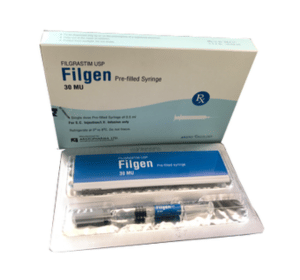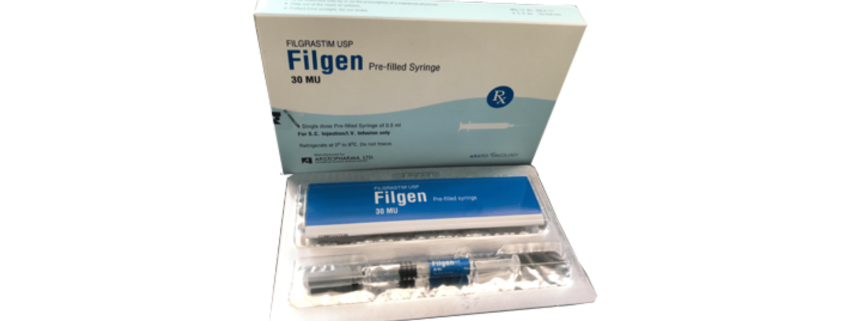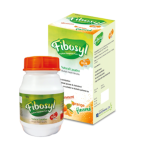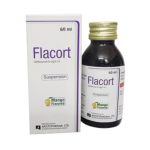Filgen (Filgrastim)

Therapeutic Group : Granulocyte Colony Stimulating Factor
Presentation:
Each single dose Filgen pre-filled syringe contains Filgrastim USP 30 MU (300 mcg) in 0.5 ml solution.
Indications:
Filgen is indicated for –
The decrease of the incidence of infection‚ as manifested by febrile neutropenia‚ in patients with nonmyeloid malignancies receiving myelosuppressive anticancer drugs associated with a significant incidence of severe neutropenia with fever.
The reduction of the time to neutrophil recovery and the duration of fever, following induction or consolidation chemotherapy treatment of patients with acute myeloid leukemia (AML).
The reduction of the duration of neutropenia and neutropenia-related clinical sequelae‚ e.g., febrile neutropenia, in patients with nonmyeloid malignancies undergoing myeloablative chemotherapy followed by bone marrow transplantation.
The mobilization of autologous hematopoietic progenitor cells into the peripheral blood for collection by leukapheresis.
The reduction of the incidence and duration of sequelae of neutropenia (e.g.‚ fever‚ infection or opharyngeal ulcers) in symptomatic patients with congenital neutropenia‚ cyclic neutropenia or idiopathic neutropenia.
The increase of the survival in patients acutely exposed to myelosuppressive doses of radiation (Hematopoietic syndrome of acute radiation syndrome).
The prevention and treatment of persistent neutropenia (ANC < 1.0 x 109/l) in patients with advanced HIV infection, in order to reduce the risk of bacterial infections, when other options to manage neutropenia are inappropriate.
Warning & Precautions:
Pregnancy: Pregnancy category C. Filgrastim should be used during pregnancy only if the potential benefit justifies the potential risk to the fetus.
Nursing mothers: Caution should be exercised if Filgrastim is administered to women who are breast feeding.
Pediatric use: No age-related differences in the pharmacokinetics of Filgrastim were observed between these subjects and adult subjects.
Geriatric use: No overall differences in safety or effectiveness were observed between elder subjects (age: 65 or greater) and younger subjects.
Hepatic impaired patients: Studies of Filgrastim in patients with severe impairment of hepatic function demonstrate that it exhibits a similar pharmacokinetics profile to that seen in normal individual.
Renal impaired patients: Studies of Filgrastim in patients with severe impairment of renal function demonstrate that it exhibits a similar pharmacokinetics profile to that seen in normal individual.
Potential effect on malignant cells: The possibility that Filgrastim acts as a growth factor for any tumor type cannot be excluded.
Nuclear imaging: Filgrastim causes transient positive bone-imaging changes which should be considered when interpreting bone-imaging results.
Side effects:
Most common side effects in patients –
With nonmyeloid malignancies receiving myelosuppressive anti-cancer drugs are pyrexia, pain, rash, cough and dyspnea.
With AML are pain, epistaxis and rash.
With nonmyeloid malignancies undergoing myeloablative chemotherapy followed by BMT is rash.
Undergoing peripheral blood progenitor cell mobilization and collection are bone pain, pyrexia and headache.
With severe chronic neutropenia (SCN) are pain, anemia, epistaxis, diarrhea, hypoesthesia and alopecia.
ADVERSE REACTIONS:
In clinical trials and post marketing exposure, following adverse reactions were observed- Splenic rupture, acute respiratory distress syndrome (ARDS), glomerulonephritis, alveolar hemorrhage, hemoptysis, capillary leak syndrome, thrombocytopenia, cutaneous vasculitis, musculoskeletal pain and sickle cell disorders.
Packing:
Each box contains 1 single dose Filgen pre-filled syringe in blister pack.



